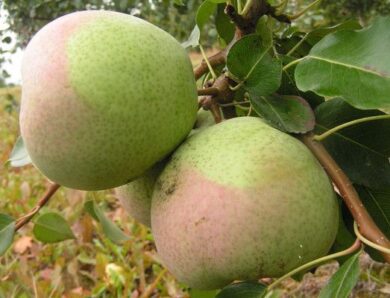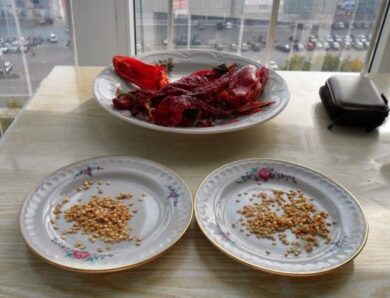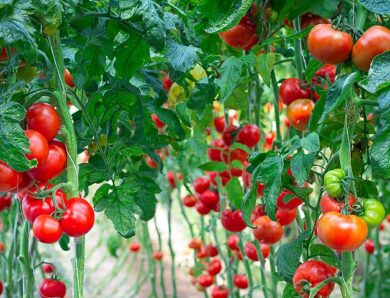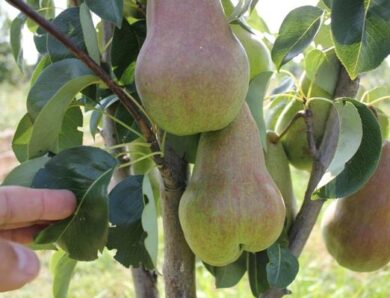Dutch varieties of onion seedlings for growing
Holland gave a large number of varieties of onions, have excellent taste and are well established in cultivation and storage. And it is not so easy for a gardener to choose the right one. Let's find out, which onion to choose.
Description of varieties
Varieties can be divided according to taste: acute, semi-spicy and sweet.
Sharp are precocious, they are well preserved, rich in essential oils, have a dense flesh. They can be cleaned not only by hand, but also by machine, as they are usually tightly packed in several layers of dry scales. But these varieties can not be called very productive.
The bulbs of semi-sharp varieties do not have many upper scales, and medium-density pulp. They are not very suitable for machine cleaning and do not last long. Yields are higher compared to spicy varieties, but they also mature longer.
Sweet onions, usually, used fresh and takes its rightful place on the summer table. He pleases us with high yields, but does not last long. Acute and semi-acute varieties are grown in all latitudes. But if in the middle and north they can be obtained only from seedlings, then in the south all varieties of onions, including sweet, can be grown during the season from seed.
Red Baron
Medium-ripe variety with a period of ripening to mass yellowing of leaves from 92 to 95 days. Salad, medium-sharp. Dutch onion has a lot of wonderful properties.
It has a spicy sweet taste, does not require additional bitterness in cooking, rich in vitamin C.. Juicy bulb, inner scales dark red, external - red. This variety is guaranteed to be productive, ideal for storage, resistant to fungal diseases.
Stuttgart is different
The Stuttgart variety came to us from Germany. Apparently, the most famous in Europe. This is an early ripening variety, period before ripening turnips from 66 to 73 days. Onions of universal use, acute. The bulb has a flattened shape, medium or large size, mass from 50 to 94 grams. The flesh is very dense and white inside, dry scales tightly cover the bulb, which allows you to save 6 months.
Very productive, matures well. Perfectly tolerates winter, so, can be sown in autumn. Of the disadvantages of susceptibility to such diseases, as cervical rot and false powdery mildew. This requires additional prevention and protection measures.
Centurion
Middle-early variety. It has a large elongated bulb with brown covering scales. Juicy white scales, the taste is sharp. Practically not used to produce green feathers, but suitable for obtaining bulbs. Yields are higher, than in Stuttgart is different. If the temperature in the basement can be stored up to 8 months.
Shetan
This onion belongs to the middle-early varieties. Good for growing from seed and seedlings. Maturation period 88-98 days (from seed), 64-87 days (onion seedling). Bulb of medium size, round, dry straw-yellow scales.
The flesh is white, medium density, semi-sharp. Used for cooking and canning. The variety is standard yielding, but has very high storage rates. Maturity after dozarivaniya reaches 100%. Resistant to fusarium wilt, but may be affected by downy mildew.
Sturon
It is grown exclusively to obtain onions from seedlings. Mid-late variety. Round onion, with a small bottom and a narrow neck, golden with brown stripes. It has a sharp taste. Has resistance to fungal diseases. This bow is perfectly preserved. He is in a cool dry place 7-8 months does not lose its marketability and taste.
Hercules
Early-maturing variety for growing onions in a two-year crop from seedlings. The bulb is medium and large, has a wide elliptical shape, the neck is of medium thickness. Dry scales of light golden color (3-4 PC.), juicy white scales. The taste of the pulp is sharp. The variety tolerates drought well, as it has well-developed roots. The yield of Hercules is much higher, than in Stuttgart is different. It has good maturity and is well preserved.
Snowball
Middle-early variety of lettuce. Round bulb, medium size. White scales and internal, and external. The flesh is very juicy, semi-sharp, ideal for summer dishes, which do not require heat treatment. Suitable for regions, where summer is short-lived. Snowball is resistant to the formation of arrows. He showed himself well in storage.
Bamberger
Medium-early variety is great for salads, and for canning, has a slightly pungent taste. Bamberger bulb elongated shape, medium in size. The variety is best planted in sandy soils, in which many trace elements. This bow practically does not form arrows, stored without losses.
Video "Description of varieties"
From the video you will learn many new facts about these varieties of onions.
Growing
It is necessary to determine, for what purpose it is necessary to grow onions - on a green feather or a turnip? If to obtain a pen, then the seeds are sown often, and to get the bulb, the distance between the seeds should be 1 — 1,5 centimeters. Otherwise the bulbs will grow small.
so, onions begin to grow this way: seeds of vacancy varieties are sown in early spring and small bulbs are harvested in August. They are dried and stored until spring. The following spring, this onion is planted again and in the fall already get a full-fledged onion.
The size of bulbs with a diameter is considered the best for planting 2 centimeters. Dry and damaged bulbs are rejected. Small bulbs can be planted for the winter, because they can dry out during storage. If planting is carried out in the spring, then small bulbs are planted first, then medium, and last but not least, the big ones. Large bulbs go faster in the arrow. If the onion went into the arrows, then even after its removal the bulb will not be able to become a marketable turnip. This onion is used for cooking in the first place. It is better to plant onions in warm soil, having previously dug it up and removed the remnants of weeds.
Plant the seedling at a distance 10 centimeters, between the rows are left 25 centimeters. The bulb is placed in the ground as follows, so that the tail remains on the surface. In the future, planting should be regularly loosened not only after each rain, but also more often. Onions love regular watering, however, it is important not to overdo it. Most onions need watering first, during seed germination, formation of the root system and increasing the green mass. Further watering is also needed, but they should not be so strong and frequent. And about a month before harvest onions are no longer watered. You should also pay attention to feeding. Mullein solution is used for this purpose.
Harvesting
Sevok onions are harvested in late summer, when the leaves turned yellow, and the neck lost elasticity. It is very important to remove the onions before that, when it begins to regrow roots.
In this case, the bulbs are much worse stored. A dry sunny day is chosen for harvesting. Removed bulbs for drying are left directly on the bed.
If the end of summer seemed rainy and a fine day can not be chosen, the harvested crop is brought into a dry place and dried there, spreading a thin layer. About a week later, when the onion dries, it is sorted, along the way pruning the remnants of roots and dry leaves. After that, the onion is transferred to a heated room for final drying.
Storage
Sevok onions are quite difficult to store at home. If the bulbs are stored incorrectly, arrows are formed. To prevent this, it is necessary to comply with the temperature regime. There are three ways to store seedlings: warm, cold and mixed. Since the arrow is formed at a temperature of 0 to 18 degrees, choose the storage temperature outside this range. For the cold way, if there is no basement or cellar, even a vegetable compartment in the fridge is suitable.
The warm method is used, if they can guarantee a higher storage temperature 18 degrees. Even a city apartment is suitable for this. With periodic airing onions overwinter well. Mixed storage is the most troublesome. Before the onset of cold onions are kept warm, and then transferred to a cool place with a temperature of one to three degrees below zero. In the spring the bulbs are warmed up, gradually raising the temperature to 25 degrees. After five days, lower the temperature to 20 degrees and leave them in this mode to wait for landing.
In addition to self-cultivation of seedlings, you can buy it. Dutch varieties of onion seedlings are best suited for this. The advantage of these varieties is, that the bulb never goes into the arrow, even if the bulb has sprouted. But also Dutch varieties are better preserved.
Video "Growing and storing seedlings"
You will learn from the video, how to grow and store seedlings.




